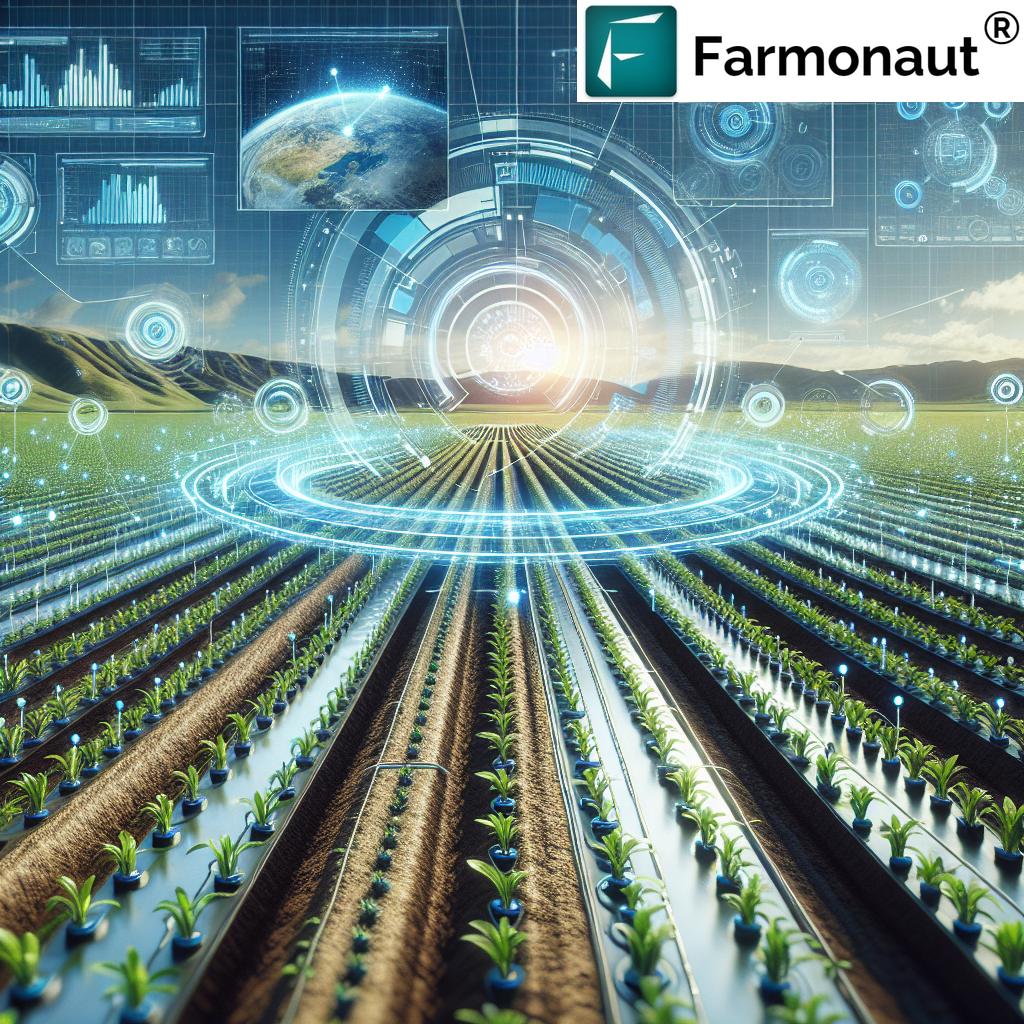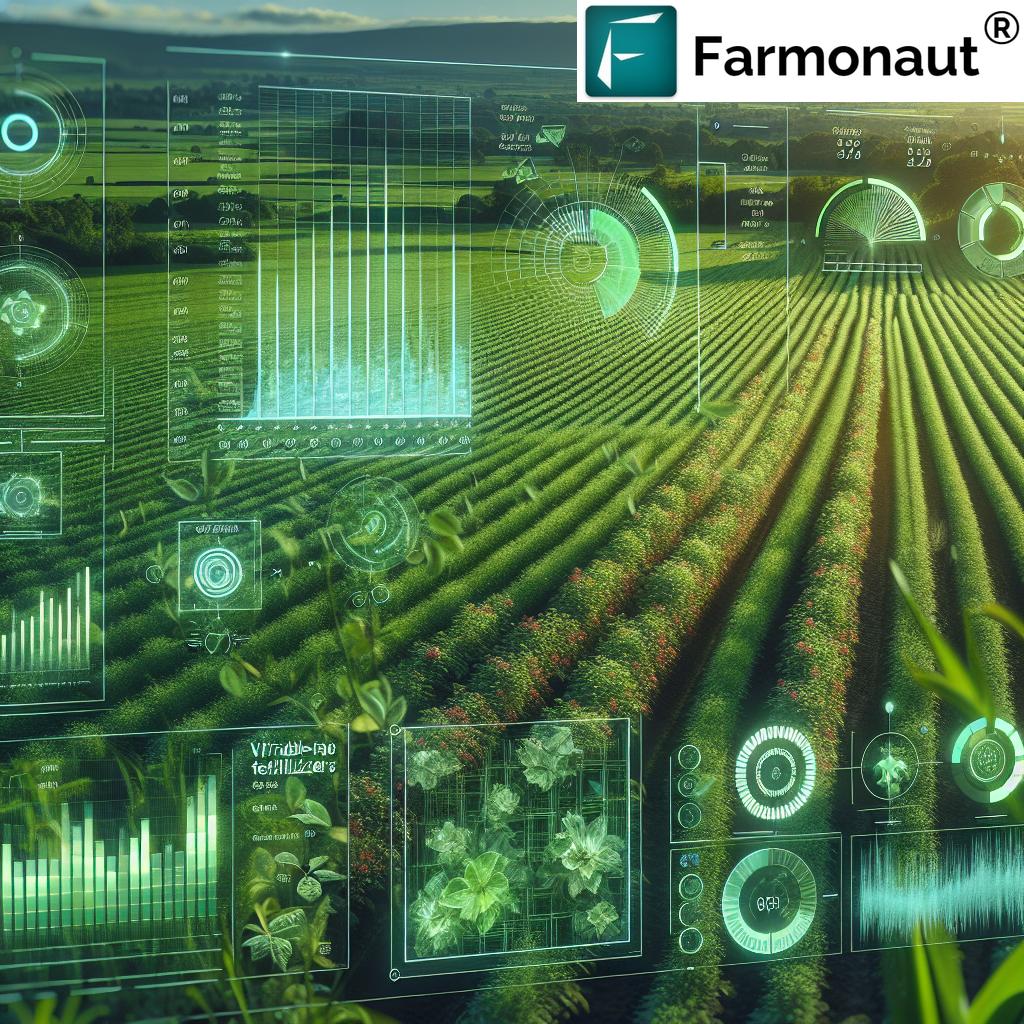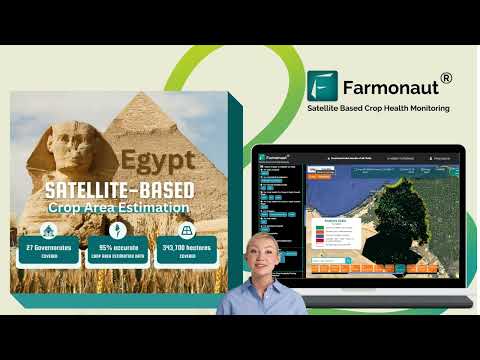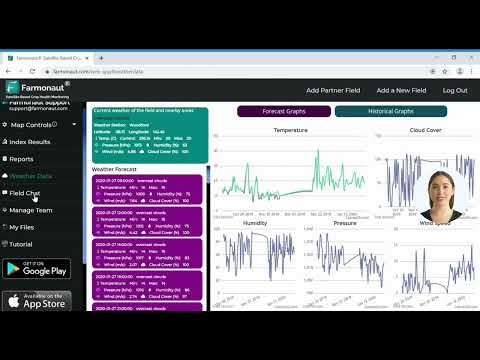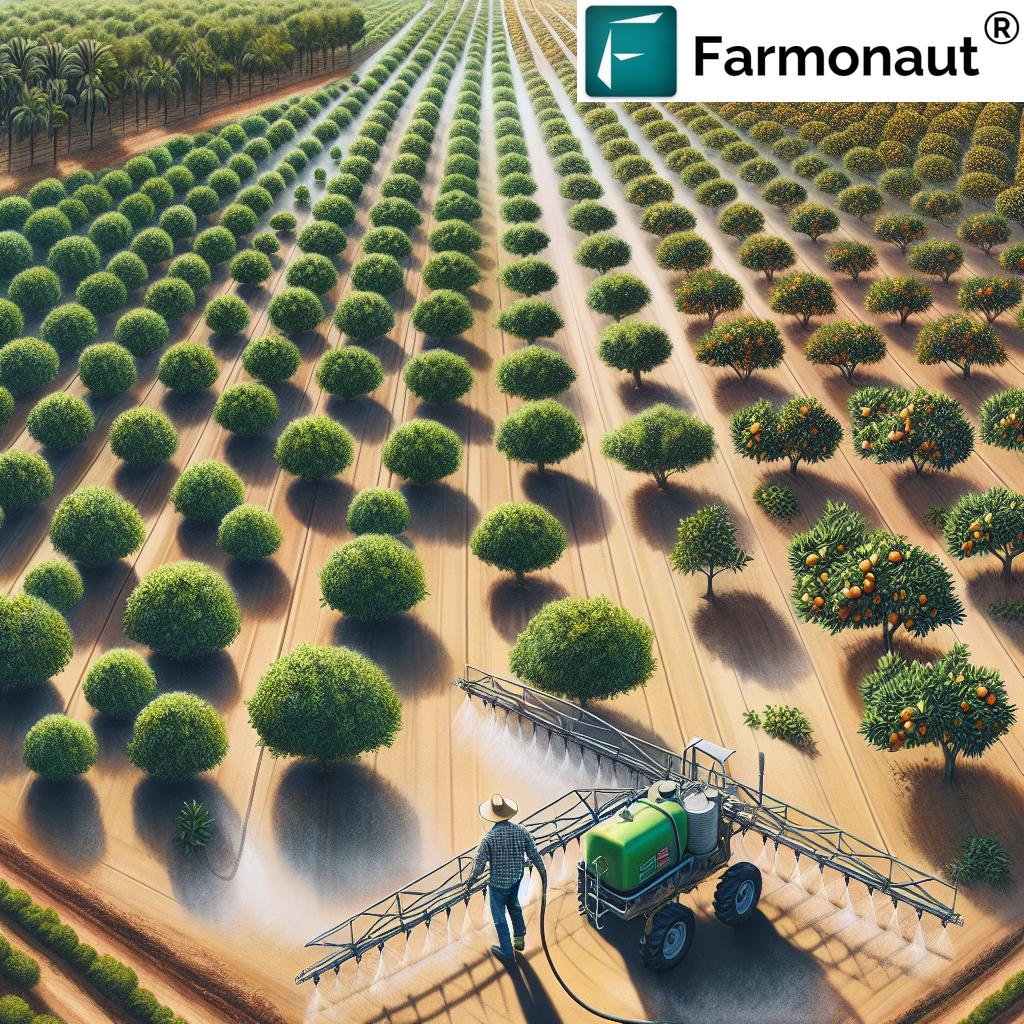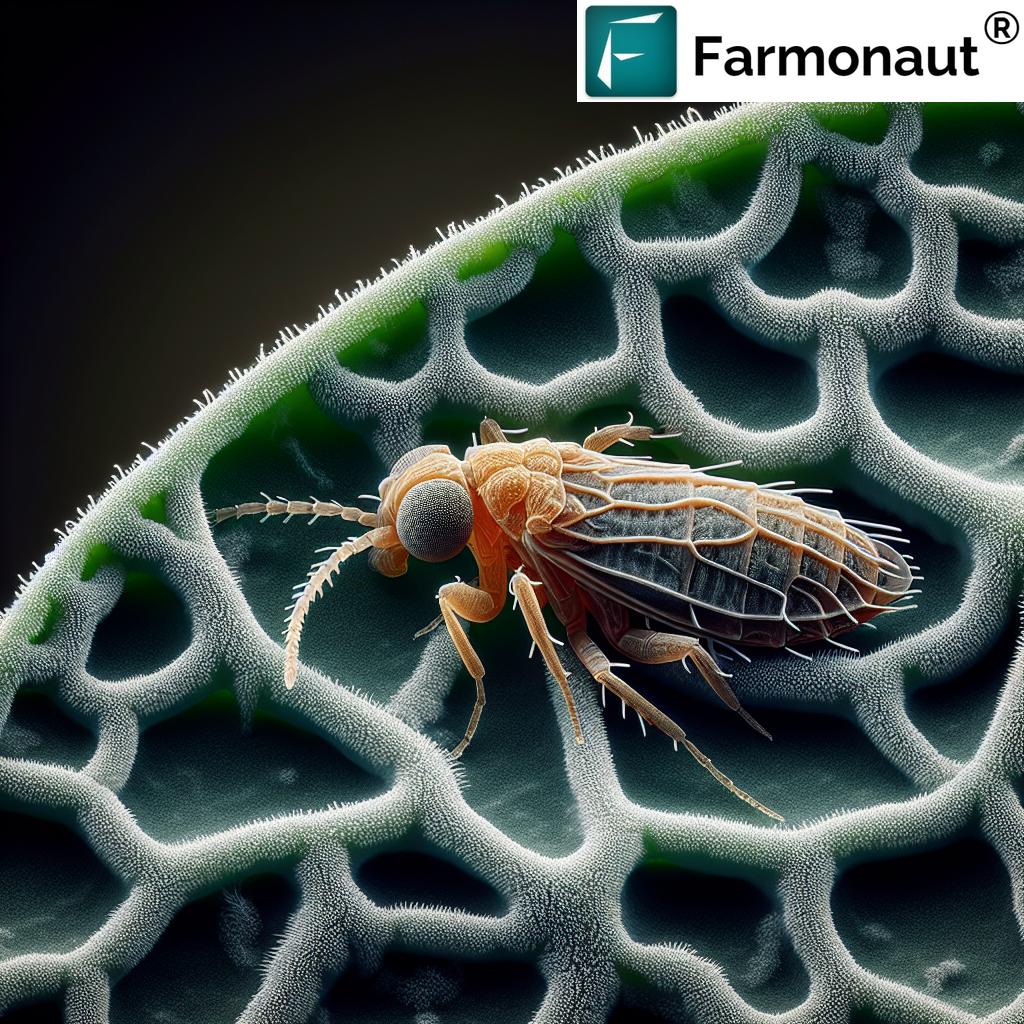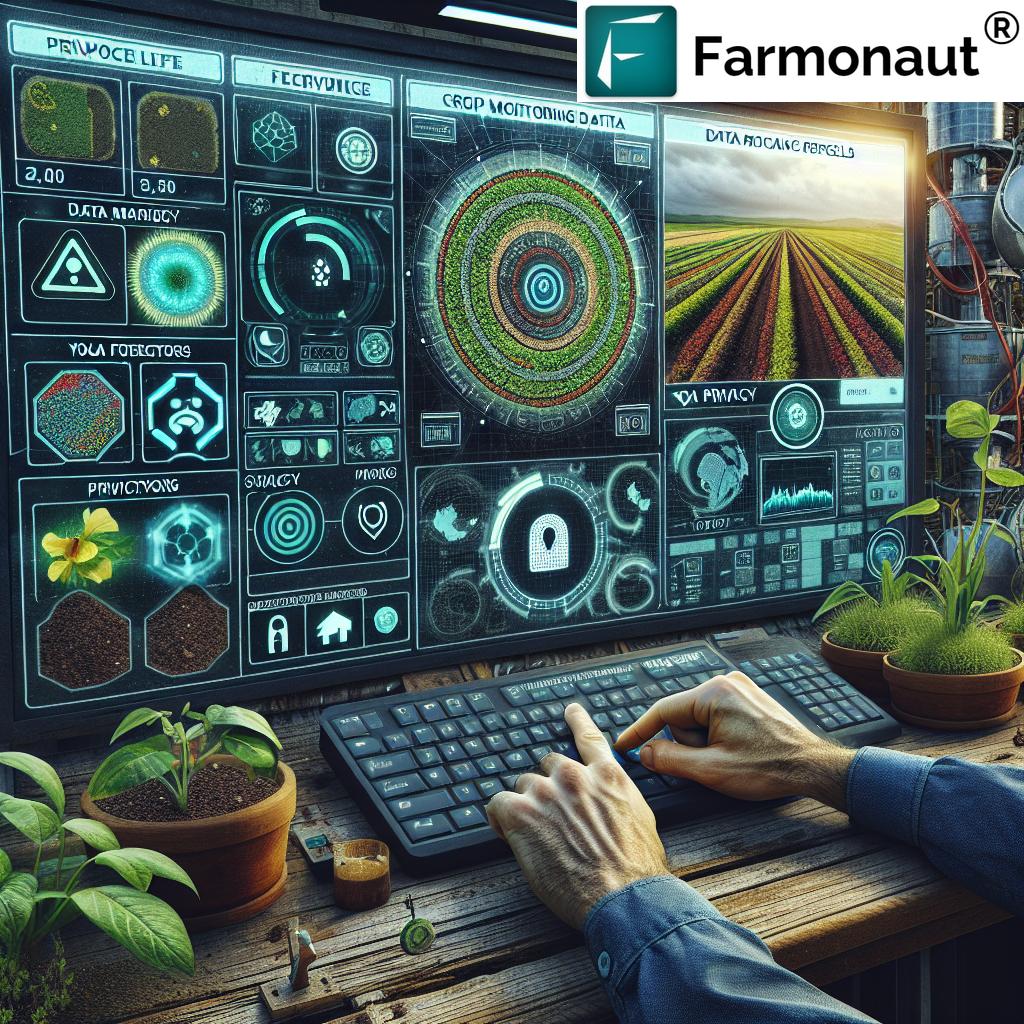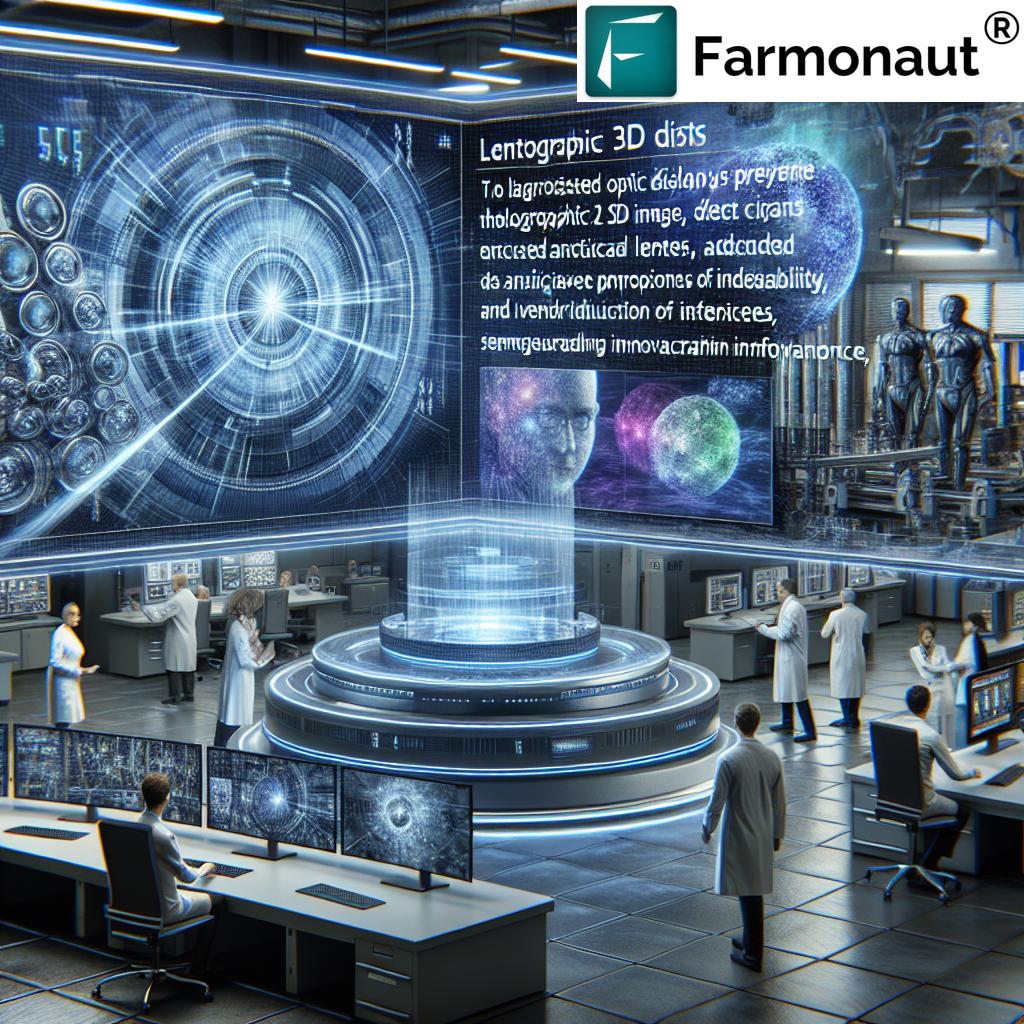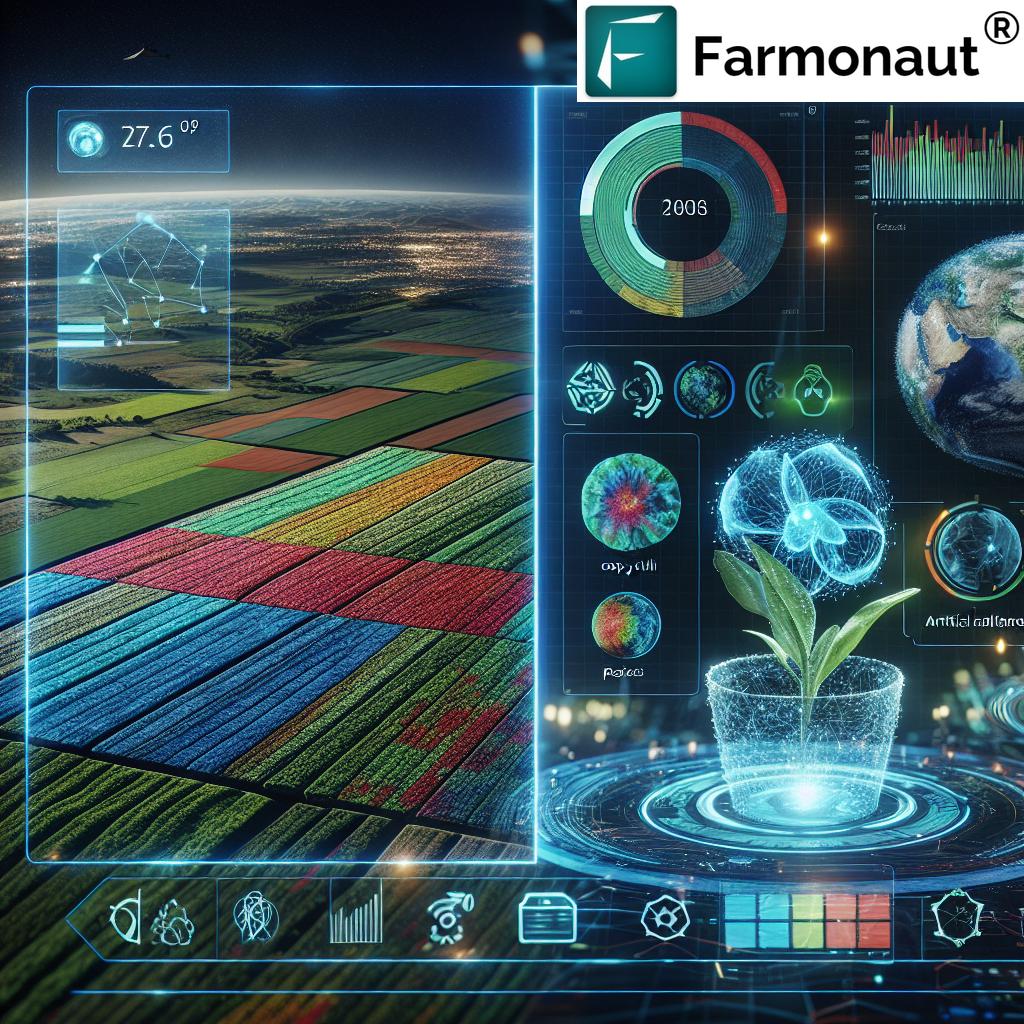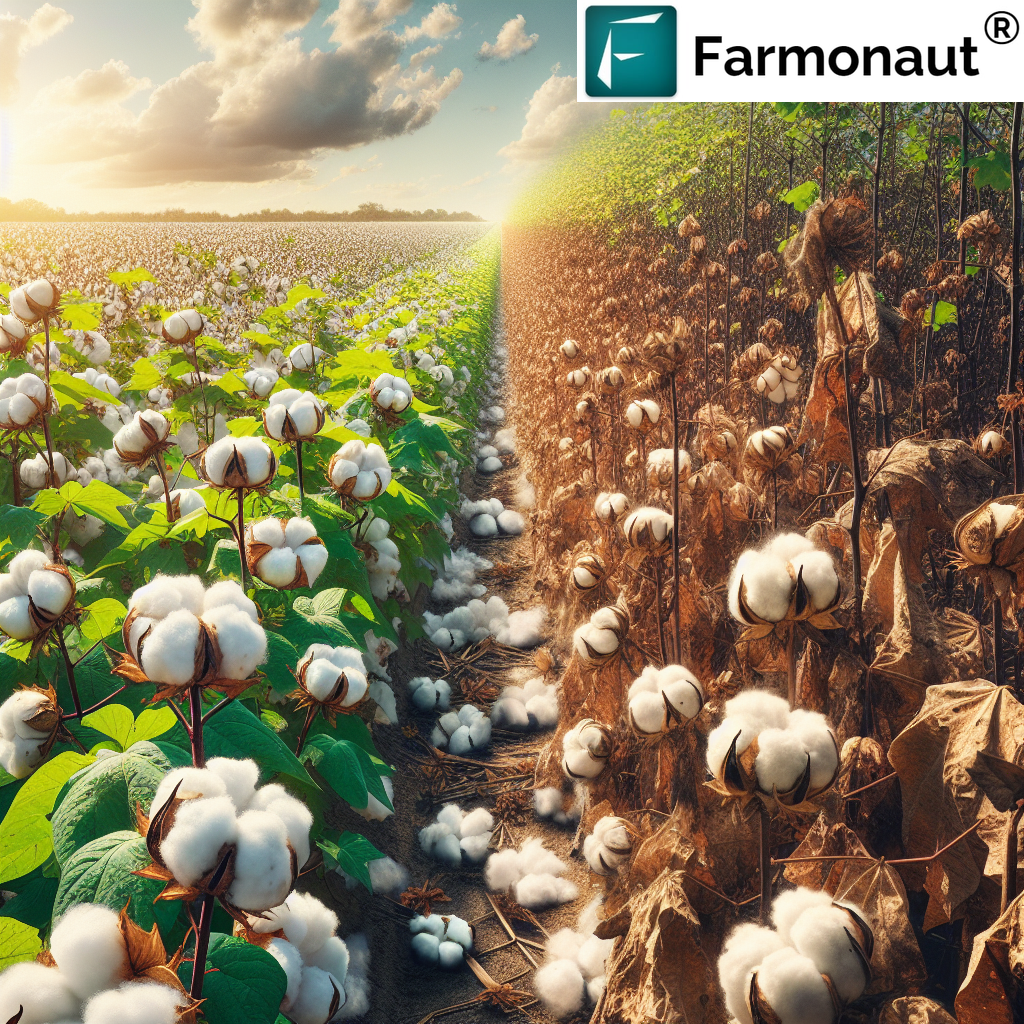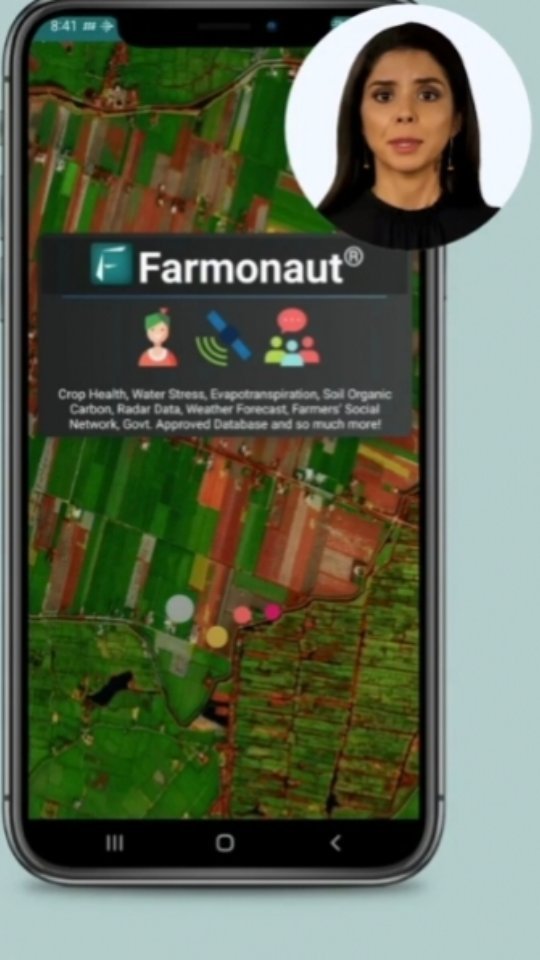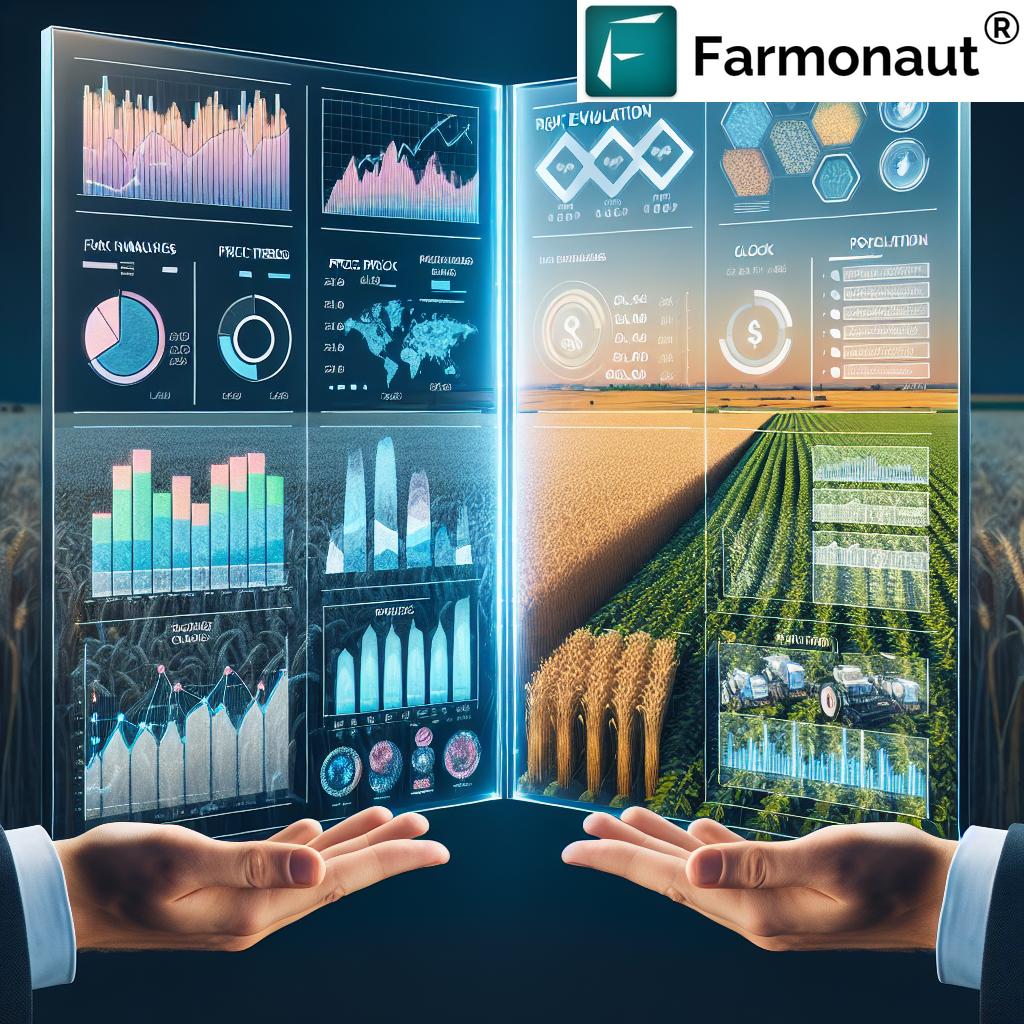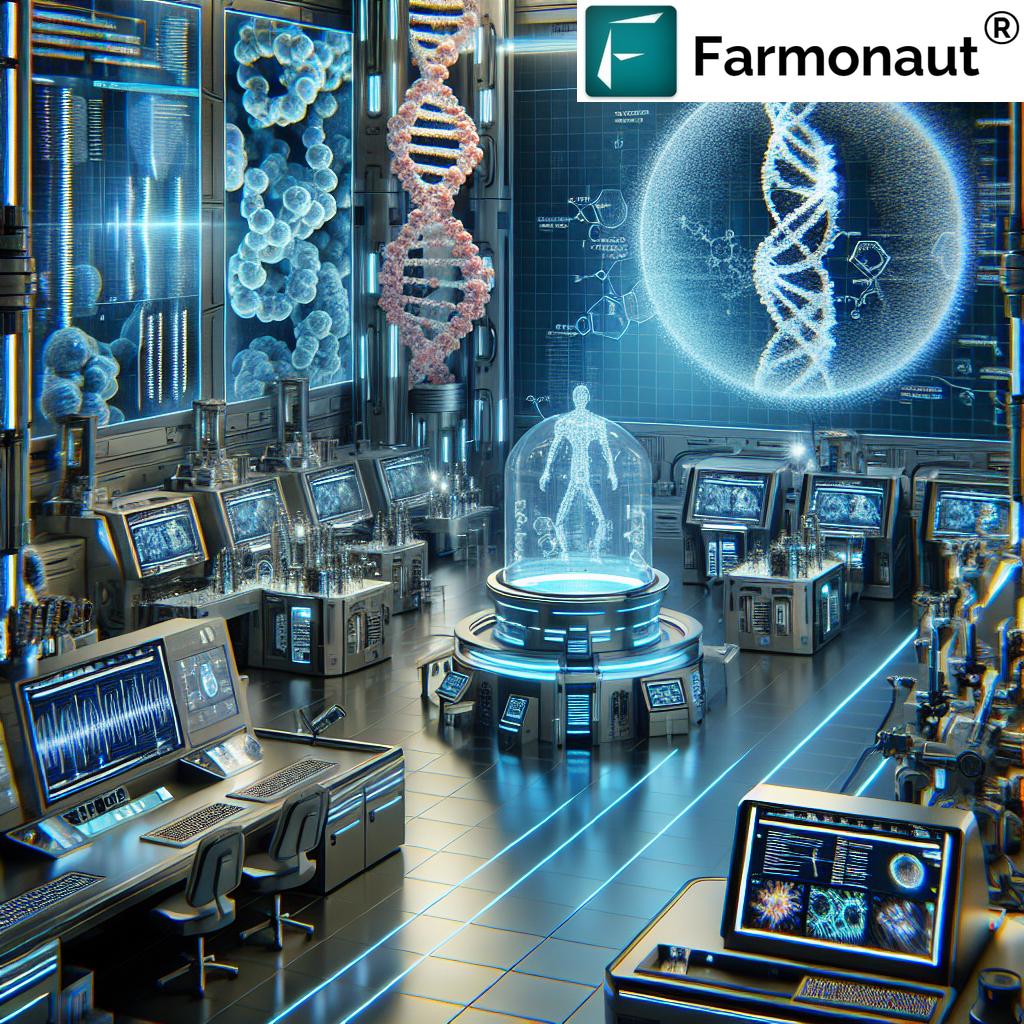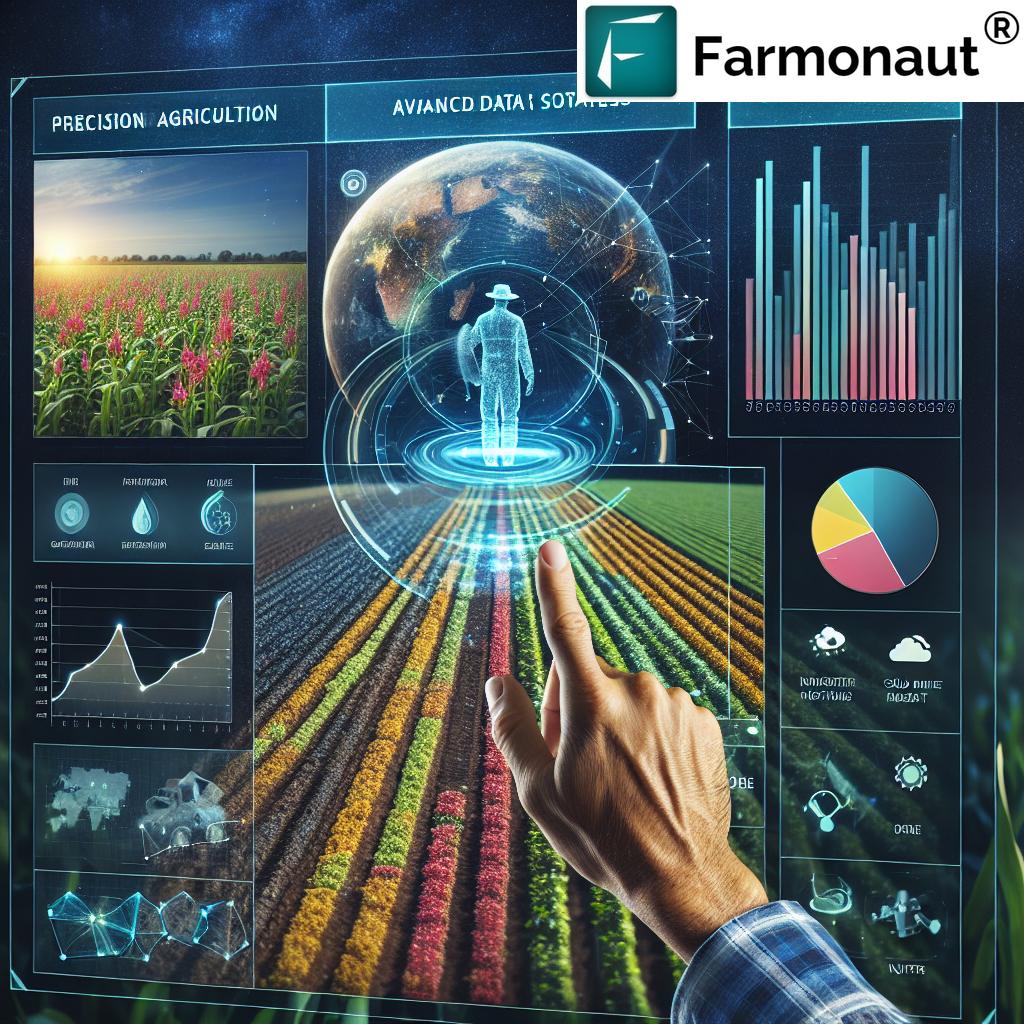Digital Farming Solutions: 7 Tech Trends Changing Agri
Table of Contents
- Introduction: How Digital Farming Solutions Are Revolutionizing Agri
- Precision Agriculture: Bringing Technology to the Field
- IoT and Sensors: Smart Farming IoT Devices in Action
- AI and Machine Learning: Unlocking Insights from Agricultural Data
- Drones and Aerial Imaging: Bird’s Eye View on Crop Management
- Data Analytics and Cloud Computing: Powering Decision-Making
- Forestry Digital Solutions: Enhancing Sustainability and Conservation
- Supply Chain Optimization: Transparency from Farm to Market
- Farmonaut: Satellite-Based Farm Management Solutions
- Comparison Table of Digital Farming Technologies and Their Estimated Impact
- Challenges, Considerations & The Road Ahead
- Frequently Asked Questions (FAQs)
“Precision agriculture can increase crop yields by up to 20% using data-driven digital farming solutions.”
Introduction: How Digital Farming Solutions Are Revolutionizing Agri
In today’s rapidly advancing world, digital farming solutions are fundamentally transforming the way we approach agriculture, farming, and forestry. By integrating state-of-the-art technologies like precision agriculture technology, smart farming IoT devices, AI in agriculture, and robust agricultural data analytics platforms, we’re opening new frontiers in efficiency, sustainability, and productivity for growers and agri-businesses worldwide.
This deep dive explores seven key tech trends and how their innovations—from crop monitoring systems and drone-enabled aerial analytics to advanced farm management technologies—are reshaping not just yields and profits, but our planet’s environmental future.
- How does precision agriculture help us optimize resource use and reduce waste?
- What role do IoT sensors play in smart soil and water monitoring?
- How do AI-powered analytics drive better field and crop decisions?
- Why are drones for crop management an efficiency game changer?
- What is the impact of digital solutions in forestry and the supply chain?
We’ll answer these questions and more, analyzing the synergy among technologies—and how pioneering platforms like Farmonaut make precision, scalable, and affordable farming accessible to all.
1. Precision Agriculture: Bringing Technology to the Field
The dawn of precision agriculture technology has ushered in a revolution in our approach to farming. This advanced system leverages GPS mapping, sensor networks, and smart data platforms for managing fields with unmatched accuracy. Instead of the old, blanket methods, we can now precisely apply fertilizers, pesticides, and water, reducing both input waste and environmental impact.
What Is Precision Agriculture & How Does It Work?
- GPS Mapping & Digital Field Maps – By surveying fields via GPS, we create high-resolution maps that show variability in soil, moisture, and crop health.
- Variable Rate Application – With these maps, our equipment adjusts the rate of inputs (like fertilizers and pesticides), ensuring each area only receives what’s required.
- Data Collection & Decision Support – Real-time crop monitoring systems and analytics notify us of problem spots—before they lead to crop losses.
The ultimate goal? To optimize the amount each field section receives, boost yields, and minimize environmental impact.
According to industry research, precision agriculture can reduce fertilizer and pesticide use by up to 15% and increase yields by 10–20%.
Why Is Precision Agriculture Essential for Sustainable Agriculture Practices?
By reducing input waste and protecting surrounding ecosystems, precision technologies help us meet the demands of modern, sustainable agriculture without exhausting critical resources.
- More accurate irrigation, pest control, and planting
- Improved resilience to droughts and pests
- Lower carbon footprint thanks to optimized resource allocation (Carbon Footprinting Tool)
Advanced satellite imagery-based crop health monitoring—like that offered by Farmonaut—gives farmers actionable insights to monitor crop stress, detect pest infestations, and enhance productivity in every field.
“Over 70% of farmers adopting digital tech report improved resource efficiency and sustainability in their operations.”
2. IoT and Sensors: Smart Farming IoT Devices in Action
One of the biggest enablers of digital farming solutions is the Internet of Things (IoT). By deploying networks of smart sensors and interconnected devices throughout farms and forests, we can collect and analyze real-time data on moisture levels, nutrient content, temperature, and much more.
Major Benefits of IoT in Agriculture
- Continuous monitoring of soil and crop conditions
- Smart irrigation systems that adapt watering schedules to weather and crop needs—drastically reducing water waste
- Early detection of diseases, pest outbreaks, and stress in plants
- Support for automated greenhouse or nursery environments
The precision and automation possible with smart farming IoT devices can lead to cost savings, reduce overuse of fertilizers, and optimize resource use—all contributing to more resilient and sustainable agriculture practices.
For Forestry
- Forestry digital solutions leverage IoT sensors to monitor humidity, temperature, and detect wildfires or illegal logging quickly.
- Real-time environmental monitoring enables rapid response to threats, protecting valuable ecosystems and facilitating sustainable management.
Farmonaut’s satellite-based crop health technology complements IoT sensor networks – together, they enable farmers to see broad patterns from the sky while acting on micro-variations at ground level.
API & Developers
If you want to integrate IoT or satellite data into your own systems, Farmonaut provides robust API access: Farmonaut API
Check out the easy-to-use API Developer Docs to accelerate your agritech projects with advanced data feeds for soil, weather, and crop analytics.
3. AI and Machine Learning: Unlocking Insights from Agricultural Data
The explosion of agricultural data from sensors, satellites, and field devices demands more than human analysis. Enter AI in agriculture and machine learning. These technologies process high volumes of data to identify patterns, make accurate forecasts, and automate advisory recommendations.
- Predicting Crop Diseases and Pest Infestations: AI algorithms digest weather, soil, and image data to forecast threats—helping farmers act before damage spreads.
- Optimizing Planting and Harvest Schedules: By analyzing environmental and market trends, AI can recommend optimal times for planting, irrigation, and harvesting.
- Precision Farm Management Technologies: AI-powered dashboard platforms, such as the Jeevn AI Advisory System from Farmonaut, deliver personalized, real-time insights directly to farmers’ smartphones.
The impact is huge: greater productivity, reduced input costs, and fewer crop losses. With AI-based advisory systems, even smallholders can access the expertise once limited to large enterprises.
AI-Driven Crop Monitoring Systems
Leveraging satellite data, Farmonaut’s AI provides actionable insights on vegetation health, soil moisture, and stress indices—enabling truly data-driven crop management.
- Farmonaut’s Crop Monitoring System: For satellite-based crop status, pest risk maps, and yield forecasting.
4. Drones and Aerial Imaging: Bird’s Eye View on Crop Management
The adoption of drones for crop management is transforming how we monitor, map, and manage large fields. These unmanned aerial vehicles (UAVs) are equipped with multispectral cameras and smart imaging software, providing sharp, real-time insight we’ve never had before.
Key Benefits of Drones in Agriculture
- High-Resolution Crop Health Imaging: Detect disease, pest, or nutrient issues before they become widespread.
- Targeted Application of Fertilizers & Pesticides: Drones can apply inputs only where needed, reducing waste and environmental impact.
- Surveying and Mapping: Cover vast areas quickly, creating detailed maps for plantation planning, yield estimation, and disaster assessment.
- Efficient Planting & Spraying: Reduce labor and safety risks while increasing the accuracy of planting and chemical application.
Farmonaut’s satellite-based crop health monitoring technology provides broad landscape visibility—useful for pre-season analysis and planning—while drones deliver highly detailed field-level, sub-hectare diagnostics.
Looking for a robust field logistics solution? Farmonaut’s Fleet and Resource Management tools empower agribusinesses to efficiently deploy and monitor drones, vehicles, and agricultural machinery—slashing operational costs and boosting sustainability.
5. Data Analytics and Cloud Computing: Powering Decision-Making
With the massive flow of field and sensor data, agricultural data analytics and cloud-based solutions help consolidate, store, and process everything in meaningful ways. This powerful combination enables smarter, collaborative decisions.
- Centralized Crop Data Dashboards: Visualize real-time crop, field, weather, and input usage trends in one place.
- Collaborative Platforms: Share insights securely across farm operations, agribusiness partners, and government stakeholders.
- Cloud-Powered Predictive Analytics: Use AI to model outcomes and simulate ‘what-if’ scenarios before implementing changes.
- Supply Chain Integration: Connect farm-level data to traceability and logistics for real-time product visibility.
Real-World Impact
Cloud computing makes scalable, secure digital farming solutions available to even remote farms with minimal infrastructure. Farmers can better anticipate weather events, optimize input schedules, and react quickly to developing crop issues.
Farmonaut’s Enterprise Farm Management Example
The Agro Admin App for Large-Scale Farm Management gives agribusinesses and organizations a full suite of analytics for field monitoring, resource management, and digitized records.
6. Forestry Digital Solutions: Enhancing Sustainability and Conservation
Forestry faces unique challenges—from wildfires and illegal logging to sustainability and resource balance. Forestry digital solutions harness the latest technologies to maintain forests as healthy, resilient carbon sinks.
- IoT Sensors: Monitor forest temperature, humidity, and other conditions for early warning of fire or disease.
- Satellite Imagery: Track large-scale changes in forest cover, identify ecological stressors, and pinpoint biodiversity losses.
- AI-Powered Alerts: Detect patterns indicative of illegal activities or encroachment.
- Carbon Footprinting: Platforms like Farmonaut assist in tracking emissions, quantifying sequestration benefits, and achieving sustainability compliance (Discover More).
These solutions enable proactive management, helping protect biodiversity and maintain the productivity of forests for generations to come. If your focus includes plantation or forest advisory, don’t miss Crop, Plantation & Forest Advisory Apps.
7. Supply Chain Optimization: Transparency from Farm to Market
Today’s consumers demand transparent, ethical food supply chains. Modern digital technologies enable the traceability and real-time product tracking that underpin confidence and quality assurance.
- IoT devices record handling, origin, and transit conditions of agricultural products from farm to retailer.
- Blockchain Distributed Ledgers: Secure, tamper-proof data logs ensure authenticity and reduce fraud.
- Supply Chain Analytics: Optimize logistics, reduce storage losses, and ensure timely delivery with less waste.
Farmonaut’s blockchain-based traceability solution delivers end-to-end transparency, supporting producers, processors, and brands committed to quality. Discover more about Product Traceability and how it unlocks supply chain value for agricultural and food products.
Comparison Table of Digital Farming Technologies and Their Estimated Impact
| Technology/Trend | Brief Description | Estimated Increase in Efficiency (%) | Estimated Yield Improvement (%) | Sustainability Benefit |
|---|---|---|---|---|
| IoT Sensors | Smart devices monitoring soil, weather, and equipment status | 15–25 | 12–18 | Reduces water/fertilizer waste; early detection of issues |
| Drones | Aerial imaging and targeted input application | 18–30 | 8–15 | Less chemical drift; precise area targeting lowers environmental impact |
| Satellite Imagery | Multispectral crop, forest, and land monitoring | 20–28 | 10–20 | Regional & field-wide sustainable management insights |
| AI Analytics | Artificial intelligence & machine learning for decision support | 13–27 | 14–22 | Reduces input use; maximizes yield with fewer resources |
| Robotics | Automated equipment for planting, harvesting, and weeding | 30–40 | 5–12 | Minimizes labor needs and soil compaction with selective application |
| Precision Irrigation | Smart water delivery systems managed by sensors | 18–35 | 12–18 | Cuts water use 20–50%; prevents runoff and waterlogging |
| Farm Management Software | Cloud platforms aggregating and analyzing farm data | 10–22 | 8–16 | Supports informed resource allocation and sustainable compliance |
Farmonaut: Satellite-Based Farm Management Solutions
A true pioneer in the agri-technology sector, Farmonaut brings the power of satellite data, artificial intelligence, and affordable subscriptions to digital farming. Our goal is to make precision agriculture accessible for smallholders and commercial farms alike, accelerating the adoption of sustainable agriculture practices and maximizing profitability.
- Multispectral Crop Health Monitoring: Gain real-time visibility into soil conditions, vegetation stress, and crop status to optimize input use and yields.
- AI & Blockchain Traceability: Transparent, end-to-end product journeys with tamper-proof digital records enhance consumer trust and supply chain transparency. Visit our traceability page for features.
- Resource & Fleet Management: Our robust Fleet Management Tools optimize logistics, cut operational waste, and boost harvest efficiency.
- Crop Loan and Insurance Advisory: Secure faster credit and fairer insurance using satellite-based verification tools—reducing fraud risks and improving finance accessibility.
- Carbon Footprint Tracking: Our carbon footprint solution helps agribusinesses meet sustainability compliance and environmental impact targets.
- Flexible & Scalable Subscriptions: Whether you need to monitor a few hectares or thousands, our modular setup delivers exactly what your operation requires.
Enjoy mobile, web, and API platform access—designed for individual farmers, cooperatives, agribusinesses, research organizations, and government agencies seeking scalable, precision-driven farming solutions. Learn more or sign up via our Web App.
Challenges, Considerations & The Road Ahead
Despite their enormous promise, digital farming solutions present a few hurdles:
- Initial Investment: Equipment and subscription fees can pose an entry barrier for the smallest farms, though platforms like Farmonaut focus on affordability and scalable access.
- Data Privacy & Security: With so much sensitive farm data in the cloud, safeguarding privacy is essential (blockchain solutions add another layer of security).
- Connectivity Gaps: Reliable internet is still a limiting factor in many rural or remote areas—infrastructure investment is vital to close this digital divide.
- Learning Curve: Ongoing support and user-friendly design help minimize the complexity of onboarding new tools.
Still, the trajectory is clear: every year brings more accessible, robust, and cost-effective technologies that empower farmers everywhere to adopt data-driven practices.
What’s Next for Digital Agriculture & Forestry?
- Deeper AI and IoT Integration: Greater synergy will yield even more precise, actionable insights.
- Automated Decision Support: Faster, more reliable advisory for planting, irrigation, harvesting—and even marketing.
- Global Sustainability: At scale, these innovations help us address climate change, minimize resource consumption, and protect the environment for future generations.
By leveraging digital farming solutions, we can collectively move towards a future where agriculture and forestry become truly efficient, traceable, and sustainable.
Frequently Asked Questions (FAQs)
What are digital farming solutions?
Digital farming solutions are a suite of advanced technologies and practices—like IoT sensors, AI analytics, drones, and precision agriculture tools—that collect and analyze data to optimize farm productivity, resource use, and sustainability. They help farmers make smarter, data-driven decisions to improve yields and reduce environmental impact.
What is the difference between digital farming and traditional farming?
Traditional farming often relies on manual observation, blanket input application, and scheduled irrigation. In contrast, digital farming leverages real-time data, sensors, and satellite imagery to apply resources selectively, monitor crop health precisely, and automate decision-making. This approach increases efficiency, reduces waste, and protects ecosystems.
How do smart farming IoT devices boost efficiency?
Smart farming IoT devices automate monitoring of soil moisture, temperature, and nutrient levels. By connecting these sensors to central data platforms, we can remotely manage irrigation, fertilization, and detect crop issues as they arise—minimizing resource waste and labor costs.
How does AI in agriculture help reduce crop losses?
AI in agriculture analyzes historical and real-time agricultural data to predict emerging threats like disease or pest outbreaks. These timely alerts allow farmers to take targeted action early—reducing input costs and minimizing yield losses.
Can digital farming solutions help with traceability and supply chain transparency?
Yes! Digital solutions like blockchain and IoT enable end-to-end, secure tracking of agricultural product origin, handling, and quality—building consumer trust and optimizing logistics. Learn more about product traceability for your farm or business.
Is Farmonaut only for large commercial farms?
Not at all. Farmonaut’s modular, subscription-based service structure is designed for everyone—from smallholder individual farmers to large-scale agribusinesses, cooperatives, and government agencies. Flexible pricing and intuitive apps make advanced digital farming accessible to all.
How do I get started with Farmonaut?
Sign up via our web app or use our iOS/Android mobile apps to begin real-time crop and resource monitoring tailored to your needs.
Conclusion
Digital farming solutions are propelling us into a new era of agriculture, farming, and forestry. Through the integration of precision agriculture technology, smart farming IoT devices, AI-powered agricultural data analytics, and cloud-based management tools, we are improving productivity, advancing sustainability, and optimizing every critical resource.
Platforms like Farmonaut are making these benefits available to all, no matter farm size or region. With these technologies, the future of global agriculture will be increasingly sustainable, efficient, and resilient—meeting the growing demand for food, fiber, and forest products while caring for our planet.


